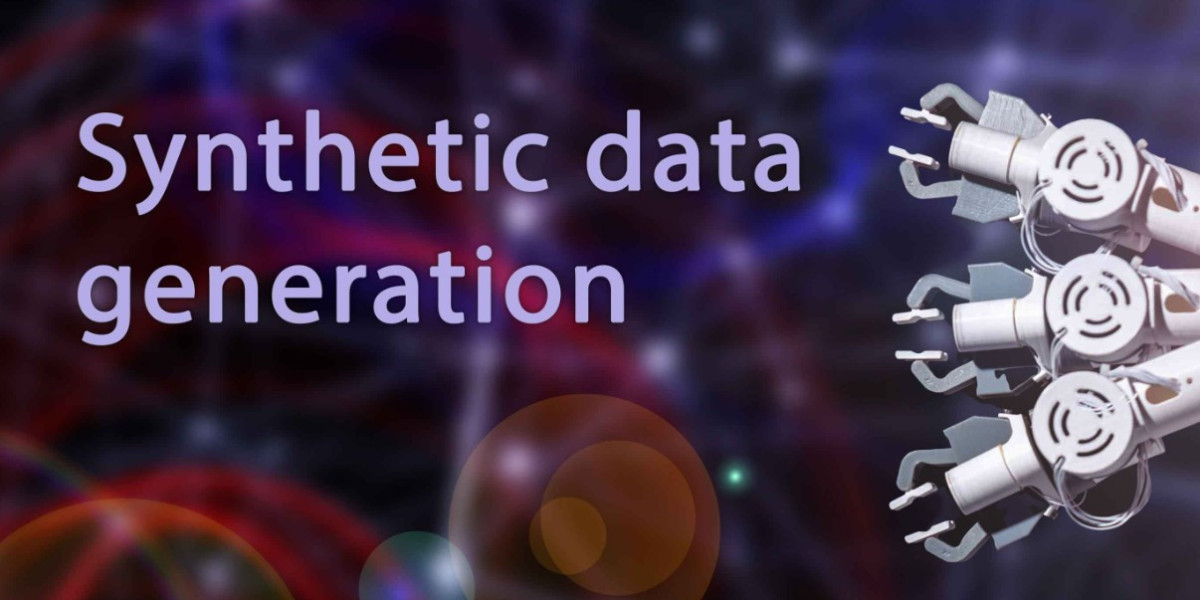In todays data-driven world, access to large, high-quality datasets is crucial for training machine learning models, conducting research, and making informed business decisions. However, real-world data is often difficult to obtain due to privacy concerns, legal restrictions, or the sheer cost of collection and storage. This is where synthetic data generation comes into play, offering a solution that balances data needs with privacy and accessibility.
What is Synthetic Data?
Synthetic data refers to artificially generated data that mimics the statistical properties of real-world data but does not correspond to actual events or individuals. In essence, it is "fake" data that is designed to have the same structure, patterns, and relationships as the original dataset, while ensuring that privacy-sensitive information is not compromised.
This data can be created for a variety of purposes, from filling gaps in real datasets to training machine learning models where actual data is scarce or sensitive. For example, instead of using real patient records in healthcare, synthetic patient data can be generated to simulate medical scenarios for training models without violating privacy laws like HIPAA.
Methods of Synthetic Data Generation
Several techniques are used to generate synthetic data, each tailored to different types of data and use cases. Some of the most common methods include:
Random Sampling:
- In this method, random values are generated based on a probability distribution derived from the real dataset. For instance, if the original data follows a normal distribution, the synthetic data is generated using the same mean and standard deviation to preserve its statistical properties.
Generative Adversarial Networks (GANs):
- GANs are a popular and advanced approach for generating synthetic data. A GAN consists of two neural networks: a generator and a discriminator. The generator creates synthetic data, and the discriminator evaluates how similar it is to real data. Over time, the generator learns to produce data that closely resembles real-world data.
Variational Autoencoders (VAEs):
- VAEs are another deep learning-based technique used for synthetic data generation. They are particularly useful for generating complex, high-dimensional data like images and videos. VAEs work by encoding real data into a latent space and then decoding it back into synthetic samples.
Agent-based Modeling:
- This method simulates the behavior of individual entities (agents) in a system. For example, agent-based models can simulate how customers interact with a website, creating synthetic data about their actions based on predefined rules.
Data Perturbation and Masking:
- Perturbation involves adding noise or changing certain values in a real dataset to create synthetic variants. This method is commonly used for privacy-preserving purposes. Masking, on the other hand, replaces sensitive values with dummy data while keeping the overall structure of the dataset intact.
Benefits of Synthetic Data
Privacy Preservation:
- One of the main advantages of synthetic data is its ability to preserve privacy. Since it does not correspond to real individuals or events, it mitigates the risk of exposing personal or sensitive information. This makes synthetic data ideal for industries like healthcare and finance, where data privacy is paramount.
Cost-Effectiveness:
- Collecting and labeling real-world data is time-consuming and expensive. Synthetic data generation allows organizations to bypass these hurdles by creating large datasets on demand, at a fraction of the cost.
Overcoming Data Scarcity:
- In many cases, especially in emerging industries or new markets, real data may be limited or unavailable. Synthetic data fills this gap by providing a means to simulate scenarios and test hypotheses when real data is scarce.
Bias Reduction:
- Real-world data can be biased due to historical, social, or cultural factors. By carefully designing synthetic data, researchers can create more balanced datasets that are representative of diverse populations, reducing the risk of biased AI models.
Safe Testing and Experimentation:
- Synthetic data offers a risk-free environment for testing new algorithms or models. Researchers can run experiments without the legal or ethical concerns associated with handling real data.
Challenges and Limitations
While synthetic data generation offers many benefits, it is not without challenges:
Data Quality:
- Generating high-quality synthetic data that truly mimics the real world is difficult. Poorly generated data may not capture the complexity or relationships present in real data, leading to inaccurate or unreliable results when used for modeling.
Bias Replication:
- If the real data used to generate synthetic data is biased, those biases may be transferred to the synthetic dataset. Care must be taken to ensure that synthetic data does not perpetuate unfair biases present in the original data.
Complexity:
- Advanced methods like GANs and VAEs require significant computational resources and expertise to implement. These methods can also be prone to issues like mode collapse, where the generator produces limited variations of the same data points, reducing the diversity of the synthetic dataset.
Validation:
- Ensuring that synthetic data is accurate and fit for purpose requires robust validation techniques. This often involves comparing the synthetic data to real data to ensure that key patterns, correlations, and distributions are preserved.
Applications of Synthetic Data
Synthetic data has a wide range of applications across various industries:
Healthcare:
- In healthcare, synthetic data is used to train AI models for diagnostic tools, simulate clinical trials, and conduct medical research without violating patient privacy. Synthetic patient records allow researchers to experiment with new treatment approaches and analyze outcomes in a safe, ethical manner.
Autonomous Vehicles:
- Training self-driving cars requires vast amounts of data on road conditions, obstacles, and traffic scenarios. Synthetic data is used to create simulated driving environments, helping improve the safety and reliability of autonomous vehicles.
Fraud Detection:
- In finance, synthetic data is often used to train fraud detection models. By generating data that mimics fraudulent and non-fraudulent transactions, institutions can better detect anomalies and prevent financial crimes.
Retail and E-commerce:
- Synthetic data can simulate customer behavior on e-commerce platforms, helping companies optimize marketing strategies, product recommendations, and user experiences.
Natural Language Processing (NLP):
- In NLP tasks like machine translation, synthetic data is used to generate new sentence pairs, expanding the training dataset and improving model performance, especially in low-resource languages.
The Future of Synthetic Data
As artificial intelligence and machine learning continue to advance, the demand for high-quality data will only increase. Synthetic data is poised to play an even greater role in the future, enabling innovations in areas like personalized medicine, smart cities, and digital twins. Additionally, as privacy regulations like GDPR and CCPA become stricter, synthetic data offers a path forward for businesses looking to harness the power of data while complying with legal requirements.
With continued advancements in generative models and data synthesis techniques, the potential for synthetic data is vast. From improving AI accuracy to safeguarding privacy, synthetic data generation stands as a critical tool in the data science toolbox.
Conclusion
Synthetic data generation is transforming how industries approach data challenges, offering a scalable, ethical, and cost-effective alternative to real-world data. While there are challenges to overcome, its benefits in terms of privacy preservation, accessibility, and innovation make it a powerful asset in a data-driven world. As the technology evolves, synthetic data will likely become an integral part of how we train machines, test systems, and solve complex problems in the years to come.








